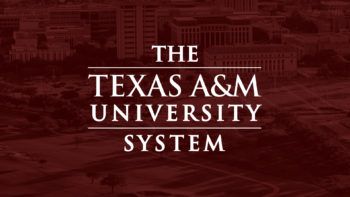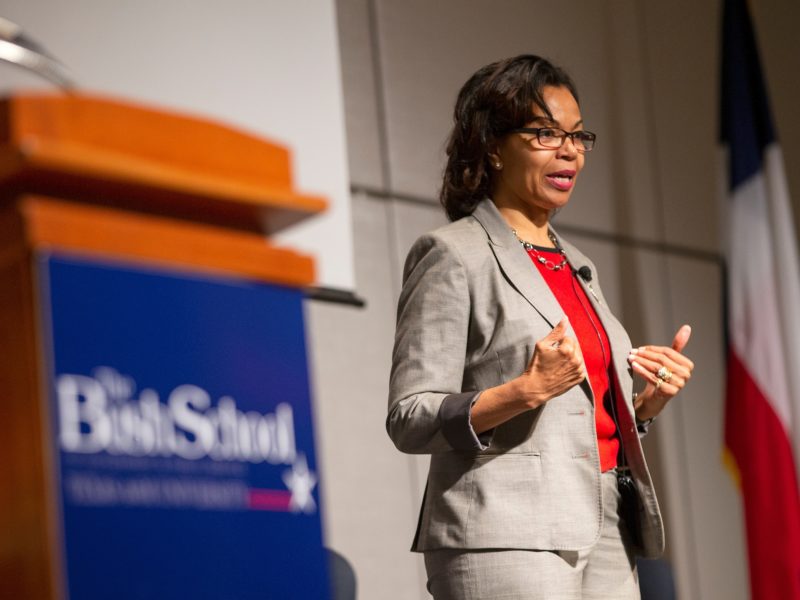Economic Impact Of Texas A&M Locally Passes $4 Billion Annually
 Texas A&M University System Chancellor John Sharp today announced that the annual economic impact of the A&M System in the Bryan/College Station area has surpassed the $4 billion milestone for the first time—and has almost doubled in a decade. For calendar year 2012, the estimated Texas A&M impact on the entire Research Valley was $4.3 billion, an increase of more than $540 million from 2011 levels and $2.2 billion more than 2002, a 95.7 percent gain.
Texas A&M University System Chancellor John Sharp today announced that the annual economic impact of the A&M System in the Bryan/College Station area has surpassed the $4 billion milestone for the first time—and has almost doubled in a decade. For calendar year 2012, the estimated Texas A&M impact on the entire Research Valley was $4.3 billion, an increase of more than $540 million from 2011 levels and $2.2 billion more than 2002, a 95.7 percent gain.
A major factor for the increase in the contribution to the local economy was the growth in expenditures by visitors attending sporting events and other campus activities at Texas A&M University. Attendance at Texas A&M athletic events increased by almost 98,000, including a gain for home football games of more than 77,000, for a 15 percent increase over the 2011 level. Visitors, particularly with Texas A&M’s move to the Southeastern Conference, remained in the Bryan-College Station area longer and spent more money in 2012.
Those findings highlight the annual in-house study conducted by Texas A&M’s Division of Finance upon the request of Chancellor Sharp and Texas A&M President R. Bowen Loftin, who leads the system’s flagship campus.
The direct local impact of Texas A&M and other locally headquartered members of the A&M System in 2012 totaled approximately $1.7 billion—an increase of about $217 million compared to 2011. With the application of the standard multiplier effect (2.5 times)—reflecting the number of times a dollar is spent and re-spent as it passes through the local economy—the total impact reached the estimated $4.3 billion level.
Sharp and Loftin joined in expressing their enthusiasm for the “win-win” relationship with the local communities.
“I like to think of us—the various parts of the A&M System based here and our host communities—as a mutually supportive ‘family,’ underscored most recently by our mutually beneficial agreement for community support for plans to expand Texas A&M’s Kyle Field,” Sharp said. “We are blessed to live and work here, and we look forward to the future with high expectations of continued growth and prosperity, working hand in hand.”
Added Loftin: “We are proud to partner with other locally based members of the A&M System in contributing to the economic and cultural vitality of our communities and surrounding area. Likewise, Texas A&M is proud to call this area our home, and we obviously appreciate all the support we receive from the communities. I always say that ‘we are in this together,’ and that includes our 50,000 Aggie students on this campus as well as our dedicated faculty and staff.”
The annualized average payroll for the 21,581 Texas A&M and A&M System employees (including student employees) based locally was approximately $873 million. Payrolls directly benefit the local economy through purchases made by employees and their families as well as through other factors, including the deposit base in local financial institutions, officials noted.
The direct local economic impact of the university’s record number of students at the main campus (50,227 for the fall semester compared to 49,861 in 2011) was estimated to be $470.3 million. Major categories for student expenditures include food and housing, clothing, school supplies and recreation.

The study showed that non-student participation at athletic and other entertainment venues, commencement exercises, continuing education programs and the George Bush Presidential Library increased by 19.5 percent, to an estimated 1.3 million visitors for 2012. When applying the per-diem leisure rate used by the Bryan/College Station Visitor and Convention Bureau (with the typical visitor staying in the community 2.5 days), campus visitors, including prospective students and their families, directly accounted for about $377.7 million going into the local economy, for a gain from a year ago of more than $200 million, the study showed.
Texas A&M and its related state agencies continue to rank first in the state in research investment. Research totals for Fiscal Year 2012 are not yet available, but the FY 2011 total credited to entities headquartered in Bryan/College Station, including the Health Science Center, was a record $705 million. Officials pointed out that a large portion of the research funding is applied to salaries and wages and are thus included in the payroll category.
Also, officials noted, in some cases research results lead to patents and licenses that have significant economic benefits that are not included in the local economic impact study.
Construction costs attributed to calendar year 2012 total about $205.3 million, a decline of approximately $58 million, attributable to the completion of work during the year on several projects, including the expansion and renovation of the Memorial Student Center. Officials noted campus construction projects provide many opportunities for regional employment and raw material sales that are not necessarily included in the university’s generalized study.
The study measured the economic impact of Texas A&M, as well as key aspects of A&M System members based in College Station, including the System Offices, the Texas A&M Health Science Center, and the System’s seven state agencies: Texas A&M AgriLife Research, Texas A&M AgriLife Extension Service, Texas A&M Engineering Experiment Station, Texas A&M Engineering Extension Service, Texas A&M Forest Service, Texas A&M Transportation Institute and Texas A&M Veterinary Medical Diagnostic Laboratory.
University officials within the Division of Finance pointed out the study is designed to highlight some of the regional economic activity resulting from the presence of Texas A&M, the A&M System headquarters and A&M System agency activities conducted locally. It does not purport to represent the sum total of their full impact on the region, and the study’s parameters and methodologies continue to be fine-tuned, they added.
Media contact: tamunews@tamu.edu.





